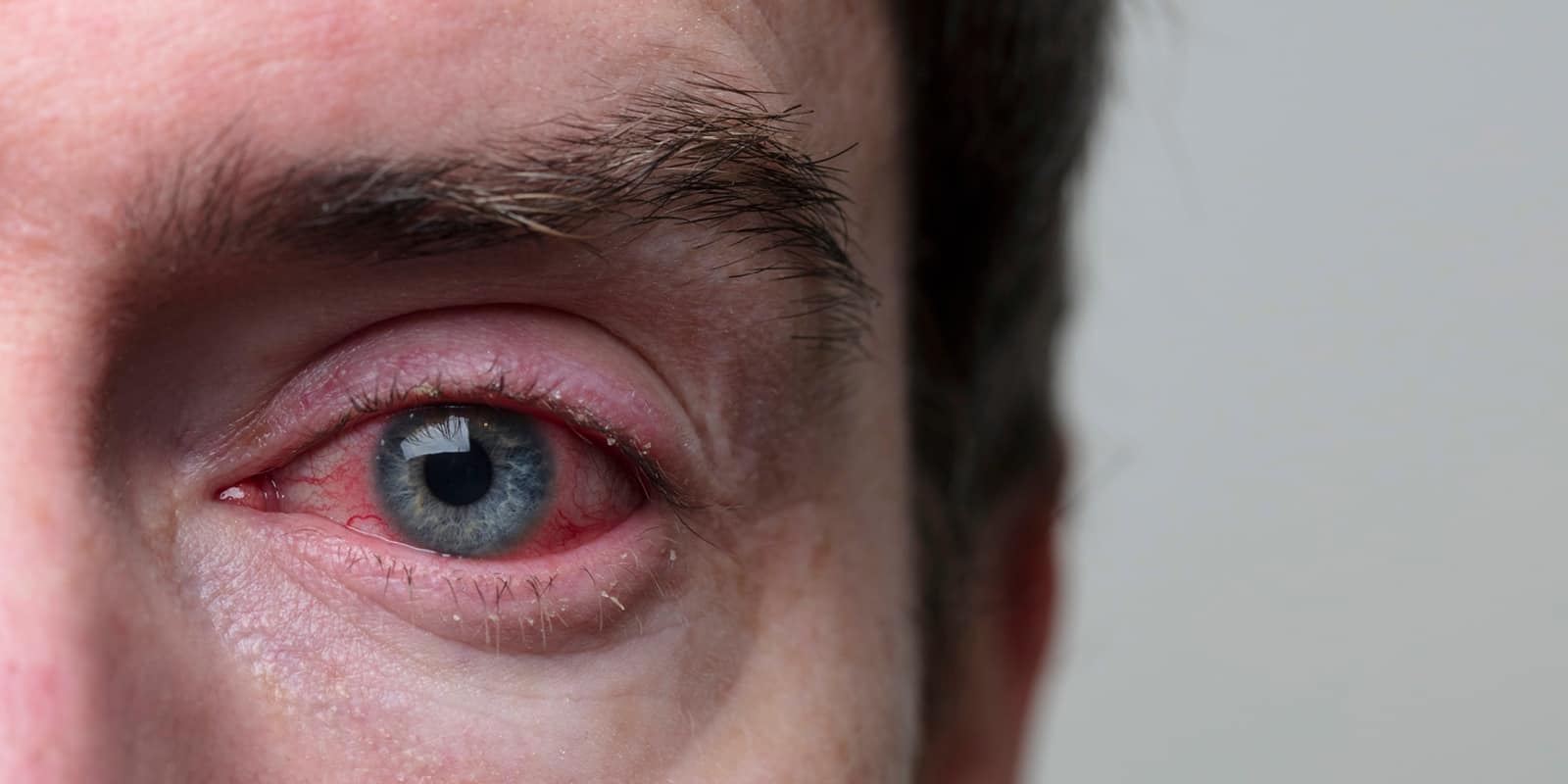Conjunctivitis is an inflammation of the conjunctiva, the thin, transparent layer that lines the inner eyelids and covers the white parts of the eye.
There are three main types of conjunctivitis – infectious, allergic and toxic.
Common Symptoms are red watery eyes, inflamed inner eyelids, blurred vision, a scratchy feeling in the eyes and, sometimes, a pusslike or watery discharge. Severe conjunctivitis can harm your vision
so you should see your optometrist or GP promptly for diagnosis and treatment.
Infectious conjunctivitis:
Infectious conjunctivitis, bacterial or viral, may be in one eye only and is very contagious. If it is caused by bacteria it is usually associated with a sticky, coloured discharge and with the lids sticking together on waking. It can be treated with antibiotic eye drops and ointment.
Other forms of the condition, such as those caused by viruses, are usually associated with a watery, clear discharge and a foreign-body sensation. They cannot be treated with antibiotics. But may be relieved by using drops prescribed by your optometrist or GP. It must be fought off by your body’s immune system.
To control the spread of infectious conjunctivitis, you should keep your hands away from your eyes, and thoroughly wash your hands before applying eye medications. Do not share towels, face washers, cosmetics, pillows or eye drops with others.
Allergic conjunctivitis:
Allergic conjunctivitis usually affects both eyes and is not contagious. It is usually associated with an airborne agent, such as some pollens, cosmetics, animals or fabrics, which causes irritation. Your body’s reaction may cause a swelling of the conjunctiva, which is a thin, glandular membrane.
It can occur alone but is often in conjunction with nasal allergy symptoms such as sneezing, sniffling and a stuffy nose which may be eased by using tablets from the pharmacist.
Toxic conjunctivitis:
Toxic conjunctivitis may occur in one eye and is not contagious.
There is usually immediate irritation after exposure. The eye requires flushing, preferably with fresh water, for at least several minutes in the case of exposure to a chemical. Irritants like air pollution, noxious fumes and excessive chlorine in swimming pools may produce toxic conjunctivitis. As can excessive use of some eye drops. In the workplace, acids and cleaning chemicals may be the cause.
If you have allergic or chemical conjunctivitis, it is important to consult your optometrist. If the cause of your problem can be identified, you should try to avoid it. In the case of allergic conjunctivitis, successful management should centre on prevention or avoidance of the allergens that trigger symptoms.
Tips to reduce exposure to allergens:
- Stay indoors when wind is blowing pollen
- Wear spectacles or sunglasses when outdoors to minimize the amount of pollen that can get into your eyes
- Avoid rubbing eyes and wearing contact lenses, which will irritate your eyes or make your condition worse
- Reduce dust mite exposure in your home, especially in the bedroom. Bedding, particularly pillows, should be encased in mite-proof covers. Wash bedding frequently in hot water, at least 55 degrees centigrade. Keep humidity in your home between 30 and 50 percent.
- Wash your hands immediately after patting animals. Remove and wash clothing after visiting friends that have pets
- If you have a pet to which you are allergic to, keep it out of your house as much as possible. If the pet must be in the house, keep it out of the bedroom so you are not exposed to animal allergens while you sleep
- Replace carpets with timber flooring, tiles or vinyl, which is easier to keep allergen free.
If these measures do not help to resolve your conjunctivitis, your Optometrist can recommend or prescribe eye drops that will help to relieve discomfort.

